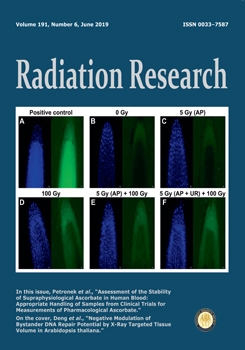Advances in accelerator technology, which have enabled conforming radiotherapy with charged hadronic species, have brought benefits as well as potential new risks to patients. To better understand the effects of ionizing radiation on tumor and surrounding tissue, it is important to investigate and quantify the relationship between energy deposition at the nanometric scale and the initial biological events. Monte Carlo track structure simulation codes provide a powerful tool for investigating this relationship; however, their success and reliability are dependent on their improvement and development accordingly to the dedicated biological data to which they are challenged. For this aim, a microbeam facility that allows for fluence control, down to one ion per cell nucleus, was used to evaluate relative frequencies of DNA damage after interaction between the incoming ion and DNA according to radiation quality. Primary human cells were exposed to alpha particles of three different energies with respective linear energy transfers (LETs) of approximately 36, 85 or 170 keV·µm–1 at the cells' center position, or to protons (19 keV·µm–1). Statistical evaluation of nuclear foci formation (53BP1/γ-H2AX), observed using immunofluorescence and related to a particle traversal, was undertaken in a large population of cell nuclei. The biological results were adjusted to consider the factors that drive the experimental uncertainties, then challenged with results using Geant4-DNA code modeling of the ionizing particle interactions on a virtual phantom of the cell nucleus with the same mean geometry and DNA density as the cells used in our experiments. Both results showed an increase of relative frequencies of foci (or simulated DNA damage) in cell nuclei as a function of increasing LET of the traversing particles, reaching a quasi-plateau when the LET exceeded 80–90 keV·µm–1. For the LET of an alpha particle ranging from 80–90 to 170 keV·µm–1, 10–30% of the particle hits did not lead to DNA damage inducing 53BP1 or γ-H2AX foci formation.
How to translate text using browser tools
25 April 2019
From Energy Deposition of Ionizing Radiation to Cell Damage Signaling: Benchmarking Simulations by Measured Yields of Initial DNA Damage after Ion Microbeam Irradiation
Géraldine Gonon,
Carmen Villagrasa,
Pascale Voisin,
Sylvain Meylan,
Marta Bueno,
Mohamed Amine Benadjaoud,
Nicolas Tang,
Frank Langner,
Hans Rabus,
Joan-Francesc Barquinero,
Ulrich Giesen,
Gaëtan Gruel
ACCESS THE FULL ARTICLE

Radiation Research
Vol. 191 • No. 6
June 2019
Vol. 191 • No. 6
June 2019




